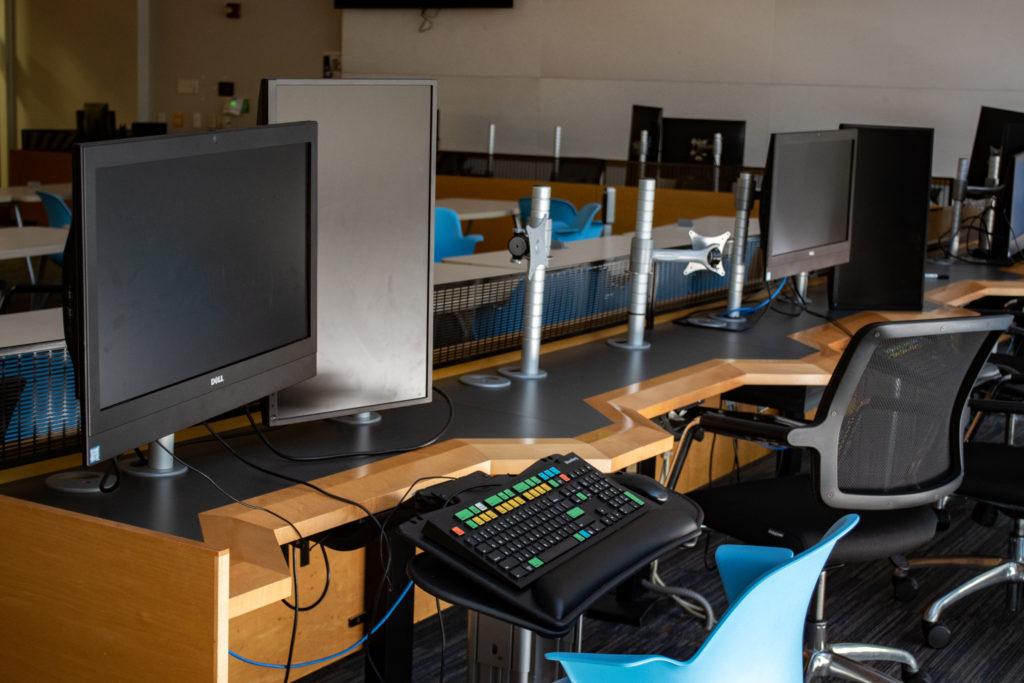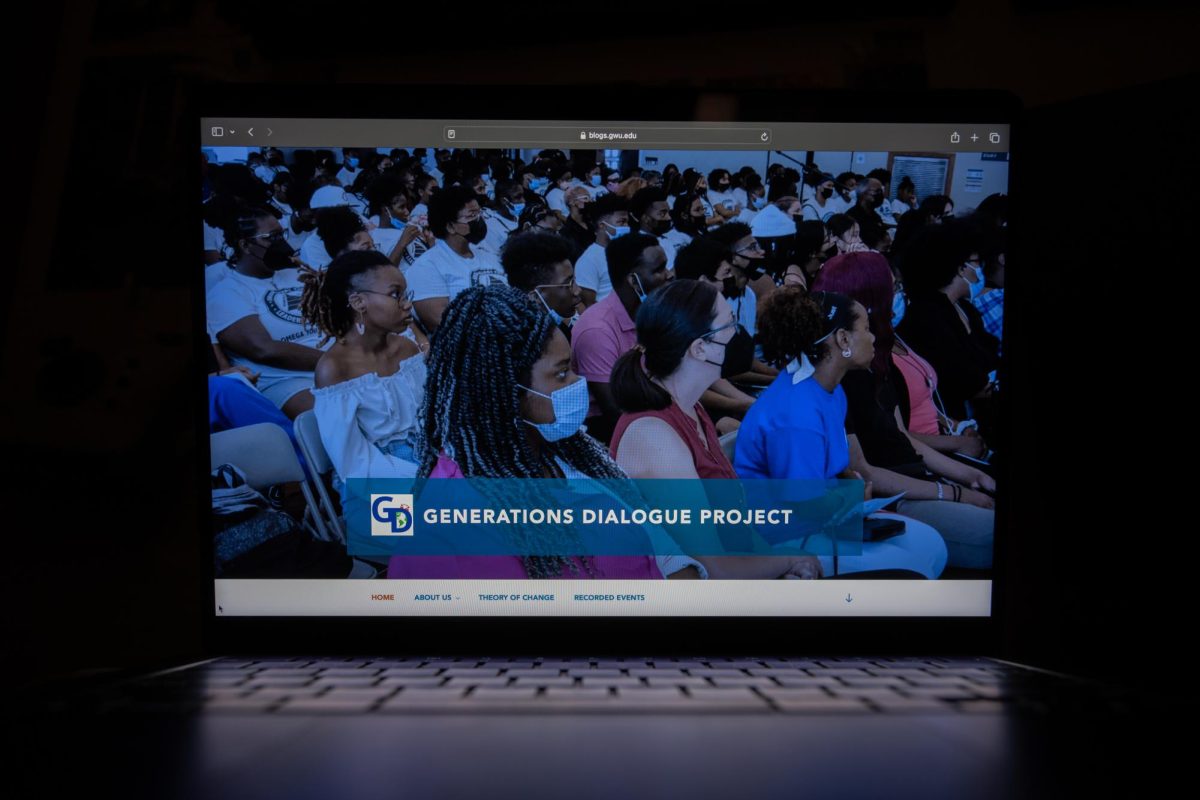Faculty returned to in-person learning this fall with new computers, web cameras, microphones and access to virtual platforms as part of wide-ranging classroom technology upgrades completed since the start of remote learning last March.
Officials said the new technology will provide professors tools that will enable students to attend classes remotely if necessary and faculty will continue using online platforms, like Zoom and Blackboard Collaborate, that were used during virtual instruction. Professors returning to in-person instruction said they completed training to use the new technology installments to accommodate remote students, but they still need an adjustment period to familiarize themselves with classroom instruction again.
University spokesperson Crystal Nosal said officials installed video web conferencing and lecture recording capabilities, like Echo360 video capture, in all classrooms that lacked them to make classes accessible for students who fall ill with COVID-19. She said faculty can also choose to use familiar platforms, like Zoom and WebEx, to host remote participants, guest speakers or lecturers in the classroom.
“Faculty are aware of the need to be attentive to the challenges students may face if they become ill with COVID and/or have to isolate,” she said in an email. “Students may be out for as long as two weeks at a time, and faculty will be able to use a variety of strategies, including using the new technology to record lectures, to help students who become ill to keep up with their schoolwork.”
She said GW Information Technology and the GW Instructional Core, a division of Libraries and Academic Innovation, have offered training sessions for faculty to familiarize themselves with these new classroom technologies. She said lessons have included how to download recorded lectures from the cloud.
She said officials are monitoring the pandemic daily and will adjust the current safety protocols against the virus accordingly in adherence to instruction from Mayor Muriel Bowser’s office. She said officials will not enforce social distancing in classrooms at this time, and faculty members may teach without masks if they are six feet apart from students.
Nosal said students are expected to wear masks within classrooms at all times. Officials reminded professors at the Faculty Senate meeting last month that students are not allowed to eat or drink in classrooms because of the risk of transmitting the coronavirus without a mask, even though the rule has always been a University policy.
“We expect students as well as faculty and staff to help maintain the norms on campus for a safe experience, and this means ensuring that everyone is properly masked when they are in public indoor space such as classrooms,” Nosal said.
Nosal declined to say when the new classroom technologies were installed.
Laila Sorurbakhsh, an assistant professor of international affairs, said some faculty and students may face a “learning curve” to resume in-person instruction because the new technology had not been installed in the spring of 2020 before classes moved online.
“It may take a few weeks to try to fall into a groove, and the more patient that everyone is, both on the student and the faculty side, I think the smoother the semester will go for everybody,” she said.
Sorurbakhsh said students with “extenuating circumstances,” like cases of illness, may attend class live, ask questions and interact with her and other students using either Zoom or Blackboard. She said classrooms could continue to utilize web conferencing software like Zoom and WebEx in the future, especially if the pandemic persists or if higher education begins to expand hybrid or remote teaching.
“Teaching this semester will be different because there will likely be some sort of online or recording component to courses, even if they are face to face,” she said. “Of course, the extent of this will vary based on what the instructor feels are the best tools to complement the pedagogical practices used to deliver the course content in the most understandable and accessible way possible.”
Experts in education technology said faculty members need to be cognizant of the challenges with the new classroom technology, like issues with lecture recordings, and they should work to keep students engaged whether or not they are remote.
Doug Ward, the associate director of the Center for Teaching Excellence at the University of Kansas, said professors should undergo technical training similar to GW’s and ask students how they learn best to shape their teaching methods. He said remote students may become disengaged from classes if recorded lectures fail to capture the full audio of the classroom during situations like group discussions.
“There’s definitely benefits in recording a class,” Ward said. “In some cases though, I think you have to think about how beneficial it is, and it really depends on what you’re doing.”
Zachary Pardos, an associate professor at the University of California, Berkeley Graduate School of Education, said utilizing more adaptive tutoring support technologies, like computer-aided instruction, can create a more personal learning environment for remote students.
“We know it works, and I’d like to see more penetration into supporting students in those classes in more classrooms,” he said.
Christopher Hoadley, an associate professor of learning sciences and educational communications and technology at New York University, said technology upgrades, like new microphones and lecture recording capabilities, are part of a “minimum” standard that can make higher education more accessible for students.
“One thing that I am hopeful of is that these installations of technology will support more equitable access to higher education, especially for people with disabilities, and will provide increasing flexibility for instructors to use technology for good instructional purposes,” he said.








